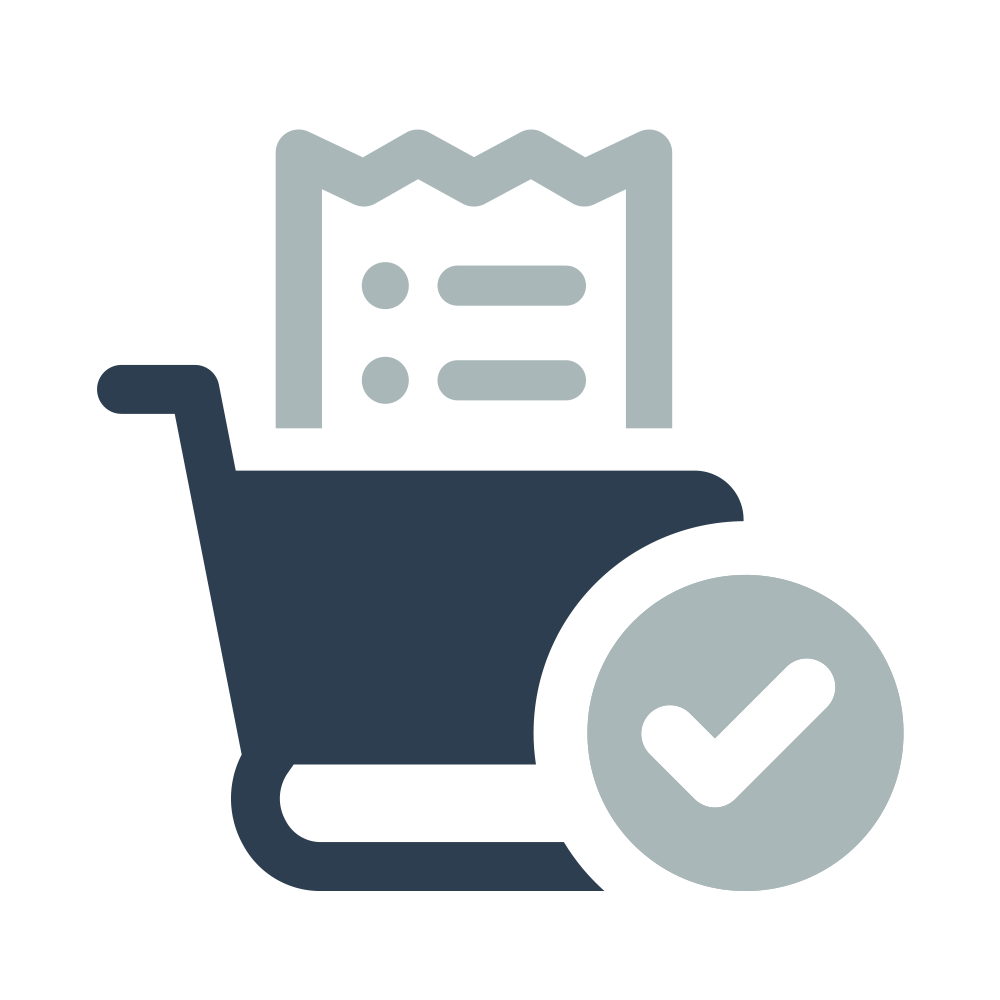Droplet digital PCR is changing the way scientists look at genetic material. With the power to split a single sample into thousands of droplets, this method lets researchers precisely count DNA like never before. In fact, ddPCR can detect rare genetic changes that other techniques easily miss, making it a top choice in medical diagnostics and advanced research. Understanding how ddPCR works and its real-world strengths can help you see why it stands out in modern molecular biology.
Table of Contents
- Droplet Digital PCR Defined and Explained
- Main Components and Workflow Process
- Key Applications Across Scientific Fields
- Advantages and Limitations Compared
- Cost, Accessibility, and Practical Considerations
Key Takeaways
| Point | Details |
|---|---|
| Transformative Technology | Droplet digital PCR (ddPCR) redefines genetic material analysis by offering absolute quantification in individual reaction chambers, enhancing sensitivity and precision. |
| Wide Applicability | ddPCR is applicable across various fields, including biomedical diagnostics, cancer detection, and environmental science, significantly improving molecular analysis capabilities. |
| Advantages vs. Limitations | ddPCR provides unique benefits like high sensitivity and absolute quantification but also presents challenges such as high initial investment and complexity in technical requirements. |
| Financial Considerations | Implementing ddPCR involves significant costs and training, necessitating careful financial planning and resource allocation to maximize its scientific potential. |
Droplet Digital PCR Defined and Explained
Droplet digital PCR (ddPCR) represents a groundbreaking molecular biology technique that transforms traditional PCR methodology by fundamentally reimagining how genetic material is analyzed. According to research from par.nsf.gov, ddPCR is a third-generation PCR approach that partitions DNA samples into thousands of nanoliter-sized droplets, with each droplet functioning as an individual PCR reaction chamber.
The core innovation of ddPCR lies in its unique sample preparation and analysis strategy. Droplet partitioning allows researchers to perform absolute quantification of nucleic acids with unprecedented precision. As detailed by pubs.rsc.org, the process involves several critical steps:
- Emulsifying the genetic sample into numerous microscopic droplets
- Performing PCR amplification within each individual droplet
- Analyzing fluorescence signals to detect target sequence presence
- Counting positive and negative droplets for quantitative measurement
This revolutionary technique offers several significant advantages over traditional PCR methods. Unlike conventional approaches that rely on standard curves for quantification, ddPCR enables direct, absolute quantification of genetic material. Researchers can detect and measure low-abundance targets with remarkable sensitivity, making it an invaluable tool for applications ranging from genetic research and diagnostics to forensic science and environmental monitoring. The technique’s ability to provide precise molecular counting represents a substantial leap forward in genetic analysis technology.

Main Components and Workflow Process
Droplet digital PCR (ddPCR) encompasses a sophisticated system with several critical components that work in seamless coordination to enable precise genetic analysis. According to research from pubs.rsc.org, the technique fundamentally transforms genetic material analysis through a meticulously designed workflow involving thousands of microscopic reaction chambers.
The workflow process of ddPCR can be broken down into several key stages:
- Sample Preparation
- Isolating and purifying target genetic material
- Mixing DNA with specialized PCR reagents
- Preparing reaction mixtures with precise molecular markers
- Droplet Generation
- Emulsifying the genetic sample into thousands of nanoliter-sized droplets
- Creating individual microreactors for independent amplification
- Ensuring uniform droplet size and distribution
- Thermal Cycling and Amplification
- Subjecting droplets to precise temperature cycling
- Enabling PCR amplification within each individual droplet
- Allowing target sequence replication under controlled conditions
The final stage involves sophisticated fluorescence detection, where each droplet is analyzed to determine the presence or absence of target genetic sequences. This approach allows researchers to perform absolute quantification without traditional standard curves, providing unprecedented accuracy in molecular detection. By transforming complex genetic analysis into a precisely controlled, droplet-based system, ddPCR represents a revolutionary approach to understanding genetic material with remarkable sensitivity and specificity.
Key Applications Across Scientific Fields
Droplet digital PCR (ddPCR) has emerged as a transformative technology with wide-ranging applications across multiple scientific domains, offering unprecedented precision and sensitivity in molecular analysis. According to research from pubmed.ncbi.nlm.nih.gov, the technique is particularly valuable in detecting low-abundance nucleic acids, making it a critical tool in diagnosing infectious diseases with exceptional accuracy.
Biomedical and Clinical Research Applications
In the realm of medical diagnostics, ddPCR has revolutionized several key areas:
- Infectious Disease Detection: Enabling identification of viral, bacterial, and parasitic pathogens at extremely low concentrations
- Cancer Diagnostics: Detecting rare mutation events and minimal residual disease
- Genetic Disorder Screening: Performing precise quantification of genetic variations
Moreover, in neurological research, actaneurocomms.biomedcentral.com highlights ddPCR’s critical role in glioma diagnostics. The technique can detect specific mutations in genes like IDH1, IDH2, and TERT promoter, facilitating robust and rapid molecular diagnostics that aid in accurate tumor classification.
Beyond clinical applications, ddPCR demonstrates remarkable versatility in environmental science, forensic research, and agricultural biotechnology. Researchers can now quantify rare genetic markers, track environmental microorganisms, validate transgenic modifications, and perform ultra-sensitive pathogen detection with a level of precision previously unimaginable. This technological breakthrough represents a quantum leap in molecular analysis, providing scientists with an extraordinarily powerful tool for investigating complex genetic phenomena across diverse scientific disciplines.
Advantages and Limitations Compared
Droplet digital PCR (ddPCR) represents a significant advancement in molecular diagnostics, offering remarkable capabilities alongside unique challenges. According to research from pubmed.ncbi.nlm.nih.gov, the technique provides substantial advantages over traditional PCR methods, including absolute quantification without standard curves, exceptional sensitivity, and remarkable tolerance to inhibitory substances.
Key Advantages
The primary strengths of ddPCR include:
- Absolute Quantification: Direct counting of target molecules without requiring standard curves
- High Sensitivity: Capability to detect rare genetic variants and low-abundance targets
- Inhibitor Tolerance: Robust performance even in challenging sample conditions
- Precise Molecular Counting: Unprecedented accuracy in genetic material quantification
However, the technology is not without limitations. As highlighted by academic.oup.com, comparative studies reveal that no single digital PCR platform consistently outperforms others across all applications. Researchers must carefully consider specific experimental requirements when selecting a platform.
![]()
The primary limitations of ddPCR include:
- Significant initial equipment investment
- Complex technical expertise required for implementation
- Potential variability in droplet generation and stability
- Higher per-sample processing costs compared to traditional PCR methods
Ultimately, ddPCR represents a powerful scientific tool that demands nuanced understanding. While offering extraordinary molecular detection capabilities, researchers must weigh its advantages against practical constraints, selecting the approach most aligned with their specific research objectives and resource availability.
Cost, Accessibility, and Practical Considerations
Droplet digital PCR (ddPCR) represents a sophisticated molecular analysis technique with significant financial and operational implications for research laboratories. According to research from pubs.rsc.org, while providing precise quantification, the technology requires specialized equipment and consumables that can substantially impact laboratory budgets and accessibility.
Financial Considerations
The economic landscape of ddPCR implementation involves several critical factors:
- Initial Equipment Investment: Significant upfront costs for specialized instrumentation
- Consumable Expenses: Higher per-sample processing costs compared to traditional PCR
- Training Requirements: Additional expenses for technical personnel skill development
- Maintenance and Calibration: Ongoing technical support and precision instrument maintenance
As highlighted by pubmed.ncbi.nlm.nih.gov, the technology combines advanced microfluidics with TaqMan-based PCR, offering exceptional sensitivity and specificity. However, these sophisticated capabilities come with corresponding financial considerations that may limit widespread adoption, particularly in resource-constrained research environments.
Practical implementation strategies can help mitigate these challenges:
- Conducting comprehensive cost-benefit analysis before implementation
- Exploring shared instrumentation models with collaborative research partners
- Seeking institutional or grant funding for advanced technological investments
- Prioritizing applications with highest potential scientific or clinical impact
Ultimately, ddPCR represents a powerful technological investment. Researchers must carefully balance its extraordinary molecular detection capabilities against practical financial constraints, selecting an approach that maximizes scientific potential while maintaining fiscal responsibility.
Empower Your Research with Affordable Droplet Digital PCR Solutions
Are you facing challenges with costly equipment or complex workflows while striving for precise, absolute quantification in your ddPCR experiments? The article highlights crucial hurdles like significant initial investment and technical expertise demands that can slow down your scientific progress. At Shop Genomics, we understand how vital it is to access advanced technologies such as droplet partitioning, fluorescence detection, and nanoliter droplet generation without financial strain or operational roadblocks.
Boost your molecular analysis capabilities and overcome practical limitations today. Explore our solutions designed specifically to democratize cutting-edge genomic research equipment.

Don’t let budget constraints or technical complexity hold your research back. Take control with affordable, user-friendly ddPCR systems and expert support at Shop Genomics. Start accelerating your discoveries and achieving absolute quantification with confidence now.
Frequently Asked Questions
What is droplet digital PCR (ddPCR)?
Droplet digital PCR (ddPCR) is a third-generation PCR technology that partitions DNA samples into thousands of nanoliter-sized droplets, allowing for absolute quantification of nucleic acids with high precision.
How does the workflow process of ddPCR work?
The ddPCR workflow involves four main stages: sample preparation, droplet generation, thermal cycling and amplification, and fluorescence detection to quantify target genetic sequences in each droplet.
What are some key applications of ddPCR in scientific research?
ddPCR is widely used in biomedical and clinical research for infectious disease detection, cancer diagnostics, and genetic disorder screening. It also finds applications in environmental science, forensic research, and agricultural biotechnology.
What are the advantages and limitations of using ddPCR compared to traditional PCR methods?
The advantages of ddPCR include absolute quantification, high sensitivity, inhibitor tolerance, and precise molecular counting. However, limitations involve significant initial equipment investment, the need for technical expertise, and higher per-sample processing costs.




